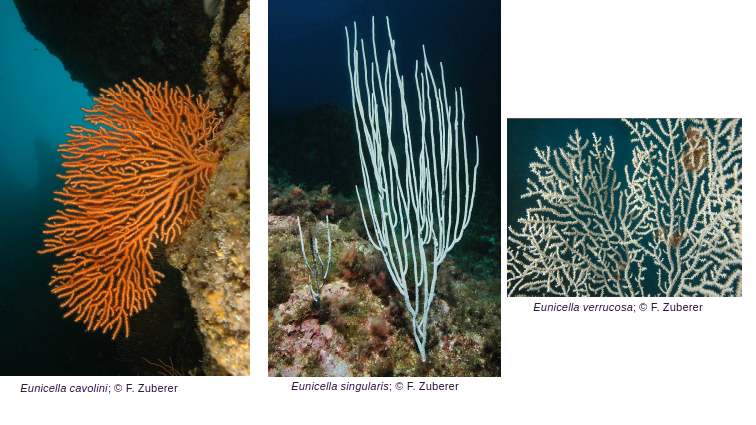The gorgonian species in the HYAM project:
Gorgonians are animals from the Octocorallia class (see https://www.marinespecies.org/aphia.php?p=taxdetails&id=1341). Mediterranean gorgonians are sessile species, which play an important role as engineer species and support for biodiversity. They are impacted by a combination of anthropic pressures, including fishing or pollution. These species also suffer from climate change with mortality events induced by marine heatwaves (https://onlinelibrary.wiley.com/doi/10.1111/gcb.16931).
In the HYAM project, we will focus on three species of the Eunicella genus, which are present in the area of Marseille: E. cavolini, E. singularis and E. verrucosa.

The yellow gorgonian, E. cavolini, is an interesting model to study the adaptation of gorgonians to different environments: this species can be observed at different depths corresponding to contrasted thermal regimes, from less than 10 to more than 100 m depth. Near Marseille, this species can also be observed in the vicinity of pollution sources, such as sewage outfalls or historic industrial deposits. Genetic studies have demonstrated the possibility of hybridisation and gene flow between E. cavolini and E. singularis in the area of Marseille (https://academic.oup.com/biolinnean/article-abstract/143/4/blae116/7926278).
In the framework of the HYAM project, we will use genomic approaches to estimate the extent of gene flow, if any, among these three species. We will test if introgression between species contributes to the adaptation of these organisms to local environmental conditions, with a focus on disturbed and polluted sites.